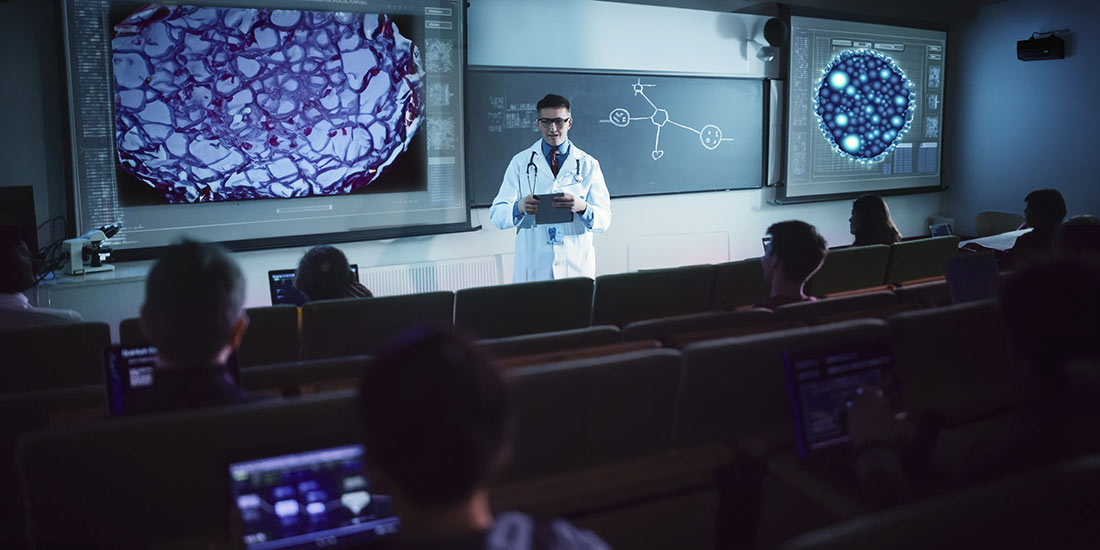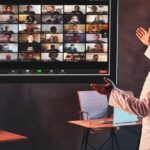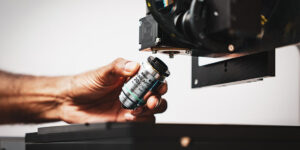Synopsis
Digital microscopes are a powerful tool for classroom teaching. Though they are used for multiple purposes, they are especially helpful in observing and studying tissue samples in digital pathology and similar fields. Digital microscopes enable students to study efficiently and observe every detail of specimens making them more engaging and productive. As a result, students benefit from a high-quality learning environment. Digital microscope-powered classrooms also help educators in making their presentations more appealing, interesting, and interactive for their students.
Why do You Need Digital Microscopes?
Digital microscopes are valuable tools in scientific and research fields such as biology, chemistry, and geology. In addition to their use in medicine, especially pathology, digital microscopes are also beneficial in classroom teaching sessions. They create an interactive environment where everyone can observe and study specimens in high quality.
Adds to the Knowledge
Learning and understanding concepts using appropriate resources is a key aspect during the formative years in higher education. A digital microscope, with its ability to see the details and microstructures of various samples, is the perfect tool for high-level understanding. The knowledge, thus, gained during higher studies adds to confidence and fuels professional growth.
Flexibility to Review
Digital microscopes’ high magnification options let students see fine and minute details and structures of various specimens. Digital microscopes also help students to understand abstract concepts and give students the flexibility to review the specimens at a later stage. Additionally, high-resolution cameras and built-in light sources allow students to capture images and videos, and get a visual recording of their findings.
Hands-on Learning Experience
Students also get hands-on experience with digital microscopes. These devices allow students to interact with multiple specimens, at times simultaneously, to analyze the differences between different samples. With so much involvement from the students, classrooms become more communicative, and the atmosphere motivates students to perform better.
Impacting Day-to-day Classroom Teachings
The worth of digital microscopes can only be realized when the devices are used in classroom activities. Institutions across the globe have incorporated the use of digital microscopes into their day-to-day classroom activities.
Studies Conducted
Researchers from the University of North Carolina studied the impact of digital microscopes in schools located in low socioeconomic areas. The implementation of digital microscopes in classroom teachings transformed the learning experience of the students and led to enhanced student processes and products. Pietro Baroni et al. from the University of Brescia and the Free University of Bozen-Bolzano researched on a new user interface program for digital microscopes. These updated devices were used by elementary school teachers to encourage children’s interest in scientific exploration.
More Institutions Follow
Yazid Farinawati from the Faculty of Dentistry in Kuala Lumpur studied the use of the digital microscope in oral pathology teaching. According to the study, 92% of students preferred using a digital microscope to a traditional light microscope. A researcher from the University of Liverpool explored the use of the digital microscope in histology teaching in veterinary science. The study found that a digitized, interactive library of specimen slides and a well-organized classroom strategy has a positive result on students’ engagement and the exam results.
In a Nutshell
A digital microscope allows students to work on high-quality slides enhancing their learning experience. Students view and analyze specimens in detail and learn the abstract concepts that could help them in real-life scenarios.
A Powerful Tool for Higher Education Classroom
Several key features must be considered before finalizing the digital microscope for classroom activities. The right digital microscope will help achieve the best quality education for students. We will now discuss the 6 most important features to consider when you buy a digital microscope for your classroom.
1. Magnification
Magnification power is one of the most important features of a digital microscope. A microscope with a high magnification range allows students for detailed observation of samples. Additionally, educators can create better lesson plans with a digital microscope with a high magnification range. Instructors have the flexibility to discuss the specimen in as much detail as they wish.
2. Image resolution
Image resolution is another important feature to decide the right digital microscope to use. Higher-resolution images allow students to carry a detailed observation of the specimens and their structures. When purchasing a digital microscope, make sure it has at least 1Mpx resolution, but 2 Mpx or higher is ideal for classroom education.
3. Built-In Camera
When buying a digital microscope, one cannot ignore the advantages of a built-in camera. A microscope with a built-in camera with good resolution is ideal for easy documentation and sharing observations. This feature is vital for the educators and the students alike. A high-resolution camera is especially important for students in higher semesters.
4. Lighting
Another key aspect to consider is lighting options. Proper lighting helps in observing the samples the right way. Furthermore, if built-in LED lighting is available, then it ensures optimal sample illumination. Additionally, a microscope with built-in lighting helps instructors eliminate the need for setting up external light sources. There are also other lighting options, such as halogen illumination, phosphorescence, or polarized light.
5. Durability
A microscope used daily in a classroom should be robust, stable, and durable and must withstand frequent handling by untrained hands. Special attention should be paid to the design and the material used in the device. Ideally, the body of the microscope should be of metal and able to withstand rigorous everyday use. A durable digital microscope should be less likely to break or malfunction. A sturdy digital microscope not only saves money but also time in the long run.
6. Software
The software installed in the digital microscope is also a critical criterion to consider. The software should address all the needs of the institution. Thus, the use of customized software is the best solution. The software interface should be user-friendly and allow for easy image capture, manipulation, and analysis. The software that makes image analysis and manipulation easier is also helpful to the educator because it gives the possibility to create engaging visual arts and presentations that help achieve better explanations of the complex concepts the students need to learn.
Conclusion
A good digital microscope is a tool necessary for higher education classrooms. Students can perform value-added detailed observation and sample analysis using a good digital microscope. Digital microscopes make learning interactive and hands-on. For students, it also offers a platform to be more engaging and motivating. Sturdy design and the right materials used in digital microscopes make these devices trustworthy, allowing students and educators to achieve high-quality work results.











